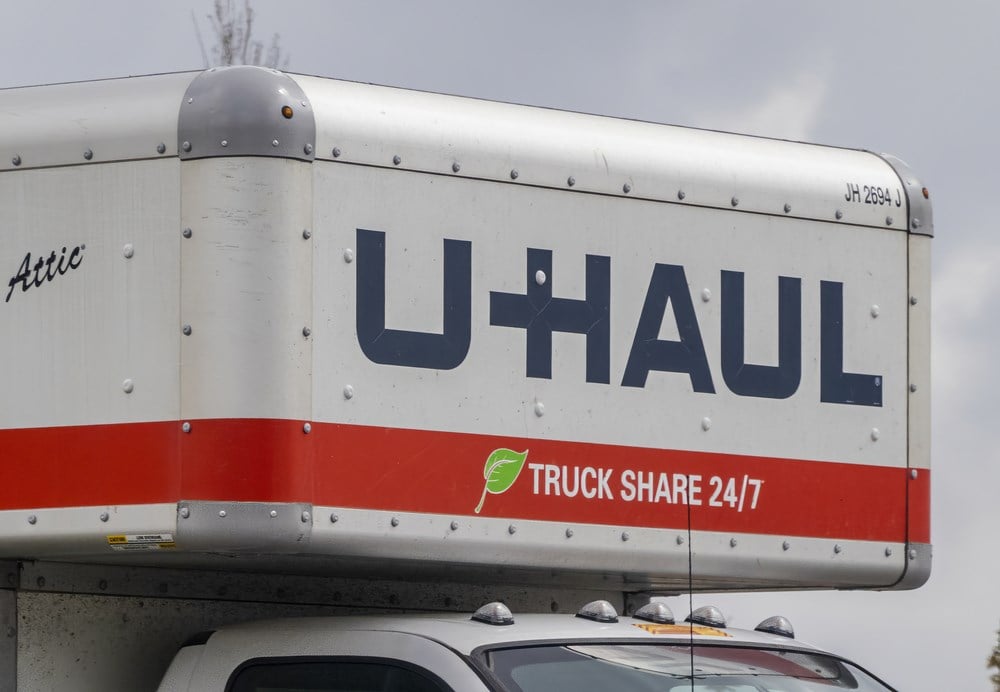What U-Haul Earnings Are Showing, Heading Up? U-Haul is showing signs of a business model pivot, as shifts in its fiscal year earnings results show two colliding trends. Investors may be facing a new rally
This story originally appeared on MarketBeat

The world of work and real estate is changing as consumers and investors know it, with remote or mostly remote work making up to 34% of the total American workforce and rent inflation reaching rates as high as 6.9% for the year 2022. As more workers fulfill their duties on a remote basis and an increasing number of renters keep getting priced out of the marketplace, a new solution may come to find those in need of flexibility and adaptive fixtures.
The self-storage unit has become a beacon of hope for those looking to try out different locations, whether because their jobs allow exploration calls or because temporary relocation is the sensible answer to greedy rental rates nationwide.
U-Haul (NASDAQ: UHAL) is one of the better-positioned businesses in the self-storage value chain, and investors can be sure that it is preparing to ride these nomadic trends in populations across the United States. As the company reports its fiscal year 2023 and fourth quarter 2023 results, these trends are only amplified to show markets what is developing to be a multi-billion-dollar opportunity under the radar. For those investors who ask for a more concrete viewpoint to avoid any speculation in these theories, a look up at the value chain may accommodate these fears.
Life Storage (NYSE: LSI) is a self-storage-focused REIT (Real Estate Investment Trust) that is directly and utterly exposed to the trends in this market. This REIT only trades 10% off its 52-week high price of nearly $148 per share, commanding a 30.1x price-to-earnings multiple. This elevated multiple stands as a reflection of current investor sentiment and willingness to pay a higher premium for the self-storage company's present and future underlying earnings. What a vote of confidence for the future of the space.
U-Haul's Pivot
Within its press release, U-Haul management points to an exciting development within the business. Firstly, its self-moving equipment rental segment, the largest by far, posted a 6% decline for the twelve months measured during the fourth quarter. The contraction within the segment can be attributed to the decreases in transaction volumes alongside a reduction in average miles driven per transaction.
Anyone could expect that given the lower mileage driven per transaction and the lower transaction volumes themselves, maintenance and repair costs would have declined, except they did not. Instead, these costs increased by $32.4 million for the fourth quarter due to additional preventative maintenance due to the increased wear and tear U-Haul's fleet saw during the past few years' activity levels.
However, the key in these trends can be dissected from management's last point to these expense increments, as the company is now allowing for "... slower rotation of new equipment into the fleet and old equipment out of the fleet." So why is management purposefully dropping the ball there?
The company may want to increase its adjusted EBITDA figures, as holding older equipment in its fleet would allow increased depreciation expenses to fall into its cash flow statements. The more depreciation expense present, the higher the management can adjust its EBITDA (Earnings Before Interest, Tax, Depreciation, and Amortization) for the period.
U-Haul's financials will show that depreciation charges for the period were only 12.5% of the company's revenue; considering this is a relatively typical figure, there must be something else cooking. Self-Storage revenues increased by 21% during the year, and the company subsequently increased its number of self-storage units by 11%.
A New Wave
According to management, the top five states where the company has chosen to lay most of the square footage of self-storage include Texas, California, Illinois, Florida, and Pennsylvania. Investors can focus on California and Florida to uncover the underlying market shift. Property values in California have declined by 5.4% during the past twelve months due to a 21% decline in listings. In Florida, home values have advanced by an equal 5.4% reflection. Subsequently, California and Florida have respective occupancy rates of 81.6% and 85.5%, above the 2023 average of 81.2%.
This information matrix tells investors where home values are declining. Real estate transactions are slowing; self-storage demand is contracting below standards, perhaps due to sellers' unwillingness to sell their homes during a recent decline; in a state like Florida, where home values are on the rise, increased transaction volumes, coupled with unaffordable rents, maybe the cause of an above-average occupancy for self-storage.
According to U-Haul analyst ratings, one analyst points to a $69.80 price target, representing nearly a 15% upside from today's prices. The stock may become more widely followed as these self-storage trends keep bringing higher operating margins to U-Haul, and investors will be handsomely rewarded.










